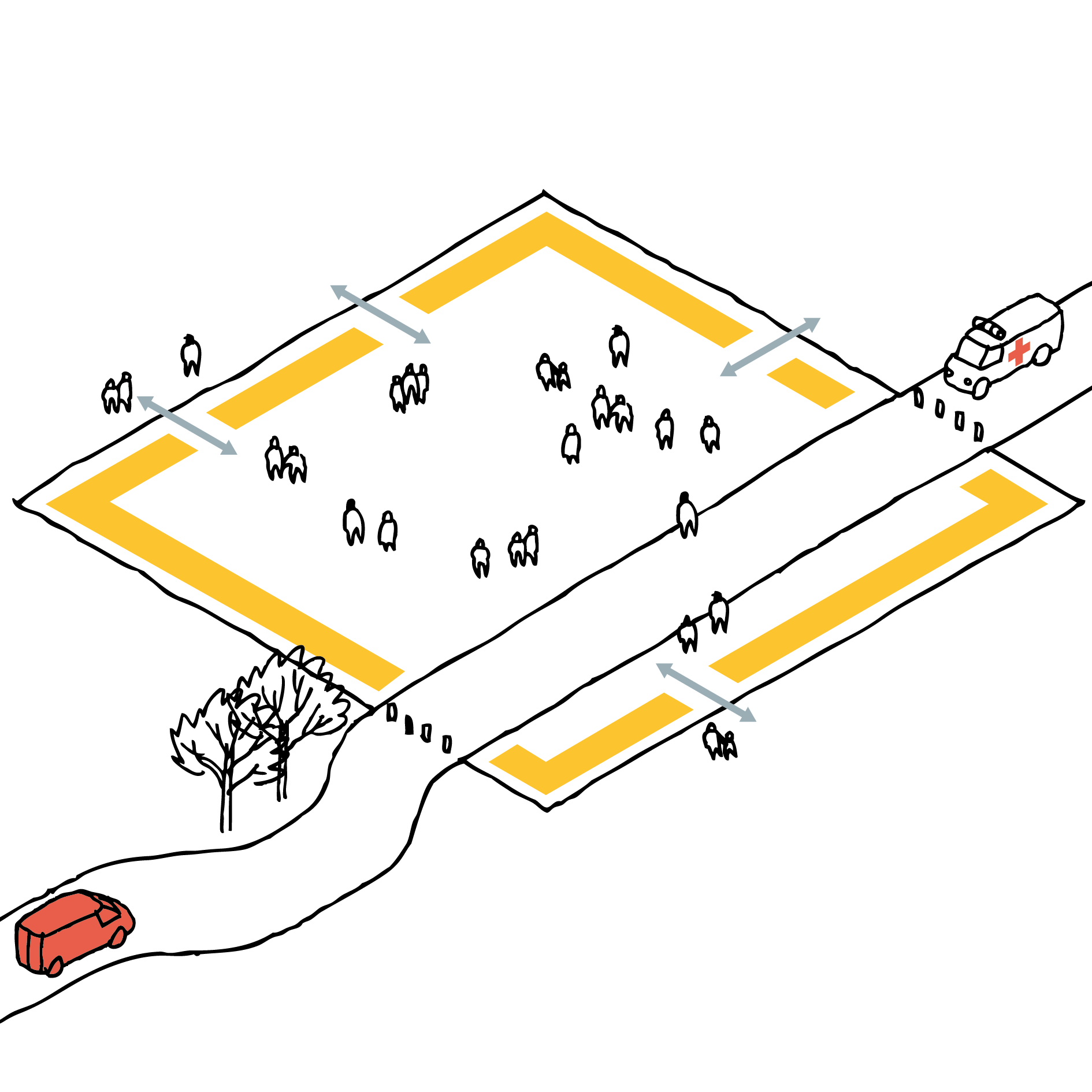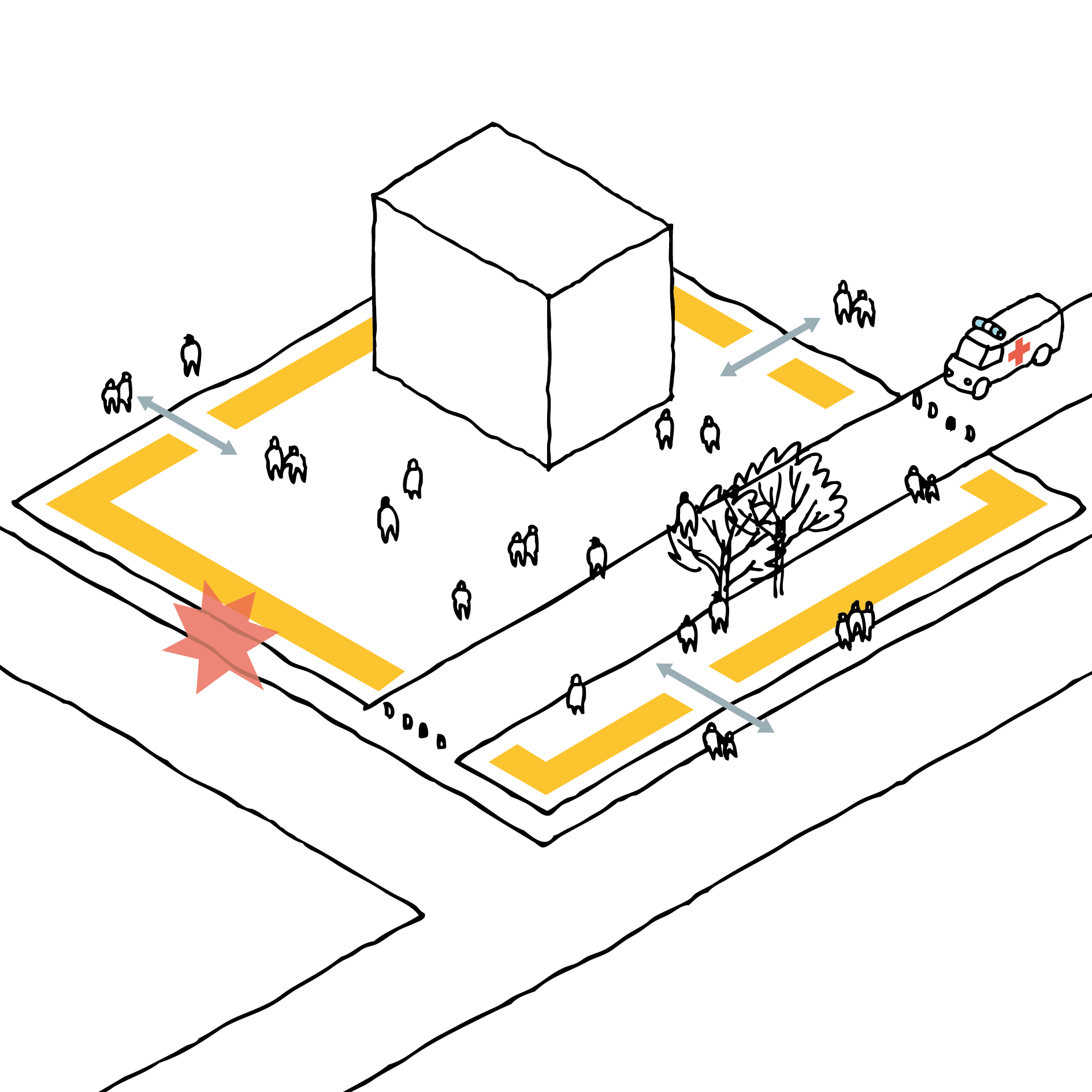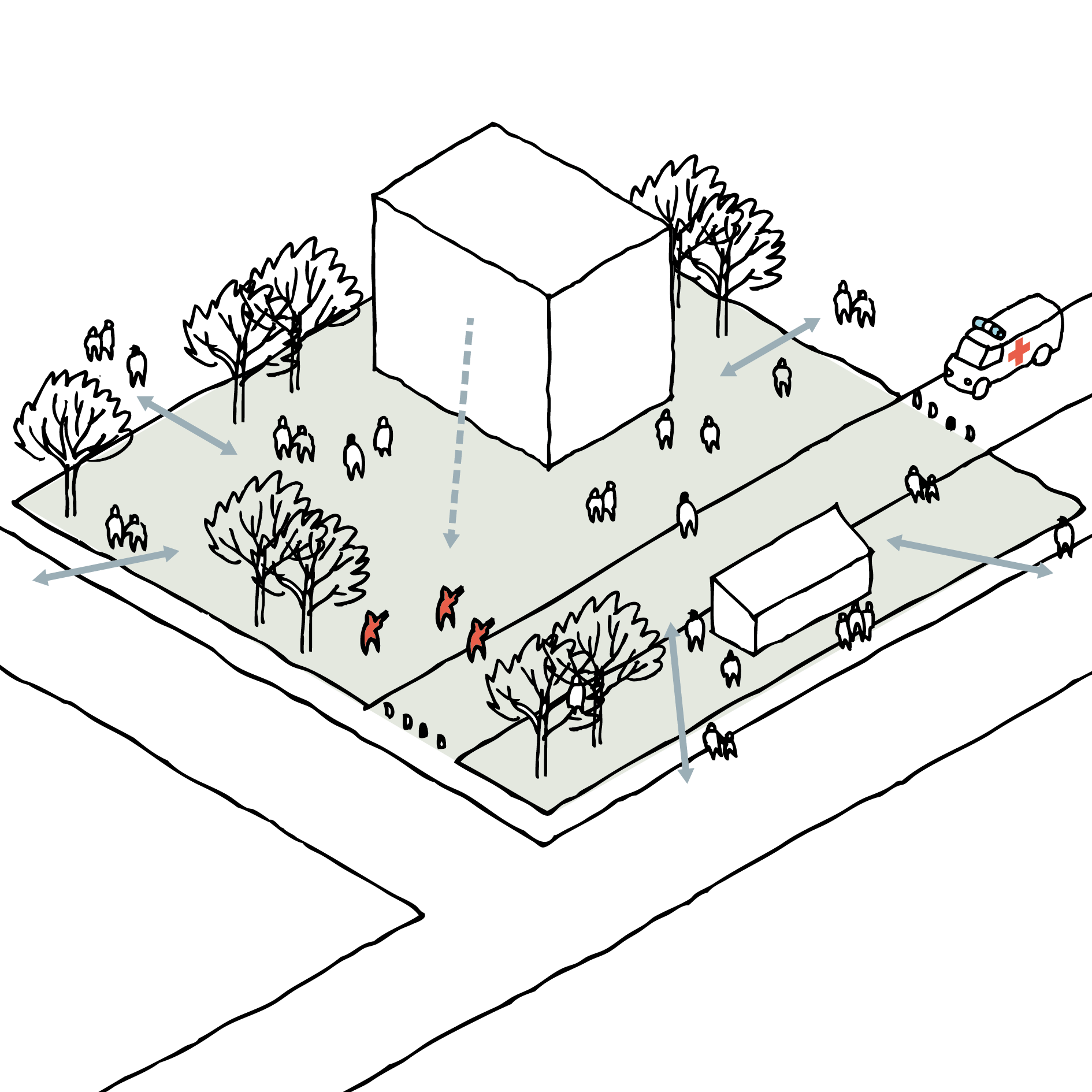ATTACK SCENARIOS
The overall security solution must comply with the chosen security level, determined on the basis of the risk assessment including the types of attacks to be protected against. Overall, a distinction is made between the following attack scenarios:
- Attack by vehicles
- Attack by explosives
- Attack by edged and pointed weapons
- Attack by thrusting and striking weapons
- Attack by firearms
- Combined forms of attack
The options for preventing the different attack scenarios vary – particularly in outdoor public spaces where there are limited countermeasures for certain types.
Primary focus areas are listed below in relation to countermeasures for the different types of attacks.
In general, edged, stabbing, thrusting, and striking weapons or firearms in public areas are challenging to protect against, as attackers can get very close to their victims without necessarily being a visible threat. Therefore, the following catalogue focuses on protective security measures in relation to vehicles. Implicit in this, however, are also partial countermeasures for explosives and attacks with edged, stabbing, thrusting, and striking weapons or firearms.
When protecting outdoor areas, it is also important to consider escape, evacuation and other emergency conditions.

Vehicles
In general, when protecting against vehicle-borne attacks, the following should be considered:
- Speed reduction measures
- Site layout, e.g. access
- Perimeter in terms of establishing distance
- Access restriction
- Escape and evacuation

Eksplosiver
In general, the following aspects should be considered when protecting against explosive attacks:
- Site layout
- Perimeter in terms of establishing distance
- Access limitation
- Detection / security culture
- Escape and evacuation

Edged, stabbing, thrusting, and striking weapons or firearms
In general, the following aspects should be considered when protecting against attacks with stabbing, striking or shooting weapons:
- Good visibility
- Lighting
- Detection / security culture

